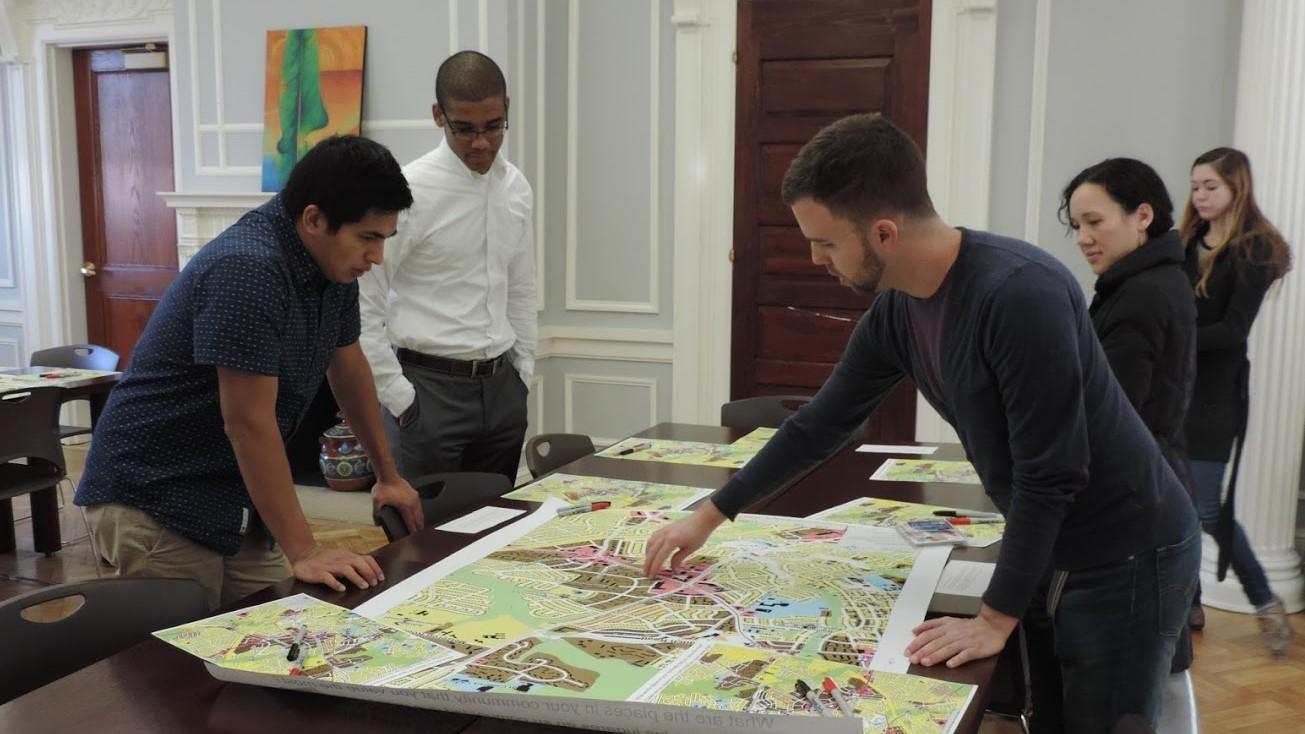Two new tool kits developed by researchers at the National Center for Smart Growth (NCSG) are providing strategies to help shape neighborhood growth, expand access to opportunity and improve quality of life. Geared toward community stakeholders and policymakers, the tools offer a roadmap to capturing community input, a critical element to planning for better neighborhoods. The tools are part of an online platform by Enterprise Community Partners, a national affordable housing nonprofit, called Opportunity 360. The platform, which was constructed with the assistance of former NSCG researcher and Enterprise Bart Harvey Fellow, Eli Knaap, provides datasets, case studies, tools and methodology for measuring neighborhood opportunity and improving community outcomes.
The tool kits are based on research conducted by Assistant Professor Willow Lung-Amam, Associate Professor Casey Dawkins and their colleagues at the NCSG, as well as projects conducted through the University of Maryland’s Urban Studies and Planning program. The toolkits pull from the extensive work by Dr. Lung-Amam and the story mapping projects she led with University of Maryland students in Washington, D.C. and Langley Park, Md. Story mapping uses the narratives of people who live and work in a community as a primary source for creating online maps. According to Dr. Lung-Amam, story mapping can help developers, planners and policy makers gain a unique view into places or resources of shared value and meaning among residents that might otherwise be overlooked, and understand how they can be leveraged in planning for neighborhood change.
“Story mapping is a critical tool in identifying a neighborhood’s assets and engaging residents in the planning for their community,” said Dr. Lung-Amam. “This process can be particularly helpful in working in disadvantaged neighborhoods, whose strengths are often invisible to outsiders. It can result in plans that better build upon existing neighborhood opportunities, while also helping communities strategize about how to improve access to opportunity and resources outside their neighborhoods.”
The kit offers instructions for launching a story mapping project, including methods for collecting information and identifying the right platform for sharing the results. It also provides a detailed case study of Langley Park, where residents are facing significant challenges with the proposed addition of a new light rail, demonstrating how story mapping can benefit communities as they plan for future opportunities. While the case study was completed before the Purple Line was greenlit, it now serves as an engagement and planning tool for the Purple Line Corridor Coalition (PLCC), a collaborative group of area stakeholders along the Purple Line Corridor, that can be replicated for other light rail neighborhoods.
“The Langley Park story map offers a tool for community members, businesses, community-based organizations and others to share what matters most to this community and to ensure that their voices are included in future plans,” says Dr. Lung-Amam. “It will be an important tool for the PLCC and others as they work to ensure that that the line is meeting the needs of diverse communities.”
In addition to story mapping tools, Dr. Lung-Amam helped Radian | Placematters, a nonprofit specializing in engagement, to develop a primer for a mixed-approach tool kit that includes examples of other engagement techniques. Containing six national case studies, this tool kit provides insights into several engagement methods—such as community dialogues, participatory budgeting and crowdsourcing—that have effectively addressed community challenges such as hunger, street improvements, child development and displacement.
“Opportunity 360 will be a vital tool for communities as they work to increase equity and opportunity for their residents,” said Dr. Gerrit Knaap, Director of the National Center for Smart Growth. “We were pleased that the work we do here at the center could compliment Enterprise’s efforts.”
Learn more about Opportunity 360 here and NCSG’s community engagement tools here.

